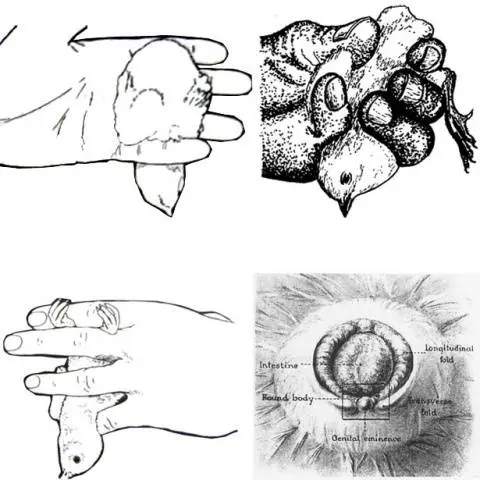Contents
- Differences by which you can determine the sex of a turkey
- By genital tubercle
- By the length of the feathers in the wings
- Along the ridge
- By behavior
- By spurs
- By “corals”
- By the tassel on the chest
- On the “earring” above the beak
- By the gland on the neck
- Turkey size
- On the legs
- According to the width of the chest
- By tail feathers
- By litter volume
- Feathers on the head
- By the feathers on the neck
- By voice
- Conclusion
Almost all novice turkey farmers are wondering: how to distinguish a turkey from a turkey? The answer to it is extremely important, since the conditions for keeping and feeding turkeys differ depending on the sex characteristics.
There are several methods to determine the gender of turkeys. Each of the methods has its pros and cons. The main negative point is that none of the considered methods gives a 100% guarantee of the accuracy of sex determination. It is possible to accurately determine the sex only by laboratory methods and in adulthood of turkeys.
Differences by which you can determine the sex of a turkey
By genital tubercle
This method is called Japanese (ventsexing) – by the name of the country, whose poultry farmers have determined the method for identifying the sex of newborn chicks by the size and shape of the genital tubercle.
If the procedure is carried out later, it will be more difficult to determine the sex, since the signs by which males differ from females begin to smooth out over time.
Advantage of the method: allows you to determine the sex immediately after hatching (all other methods – after 2 months)
Cons:
- the possibility of injury to the turkey;
- the possibility of infection of the chick with bacteria from its intestines;
- some skill is required.
How to determine the sex of a turkey by the cloaca
- Contribute to the emptying of the chick’s intestines.
- Holding the turkey over the cuvette with one hand, lightly squeeze its abdomen and sides with the middle, thumb and forefinger of the same hand. The remains of the litter must be removed with a cotton or gauze swab.
- Correctly hold the turkey during inspection. It should be held with one hand: with the left, if the examiner is right-handed, with the right – if left-handed. The chick should be upside down (the head is between the little finger and the ring finger). The paws need to be clamped between the middle and index fingers, that is, the turkey needs to be turned a little (see photo). It is important not to squeeze the chick too hard.

- Correctly open the cloaca. The genital tubercle of males is located in the lower part inside the cloaca, you can see it when it protrudes outward. To do this, you need to properly open the cloaca. This should be done with the thumb and forefinger of the hand free from holding the turkey. Fingers should be placed along the edges of the anus. Slightly stretch the cloaca, then press inward and slightly squeeze your fingers. The thumb of the holding hand can help the process.
- Determine gender. Males will have two genital tubercles, turkeys will have one, not very pronounced.
By the length of the feathers in the wings
Time of determination: from the first day of life
In males, all the feathers of the extreme row of wings are of the same length, in females they are different, but they even out as they grow. That is why this sex detection method works only at an early age of turkeys.

Along the ridge
Definition time: from 2 weeks
In turkeys, the crest is bright, shiny, well defined when warm. In turkeys, the comb is small and faded.
Method accuracy: 70%

By behavior
Definition time: from 1 month
Turkeys have a proud posture. They take a special pose and spread their tail fan-shaped. When a male is excited or angry, his corals turn red and the protrusion above his bill tenses. Females are more sociable, stray into flocks. Often behave more aggressively than turkeys.

By spurs
Definition time: from 2 months
Males are characterized by the presence of horny processes on their paws – spurs. The turkeys need them for fights. Spurs are sometimes found in females in their infancy.
In the photo – a spur over the finger of a male
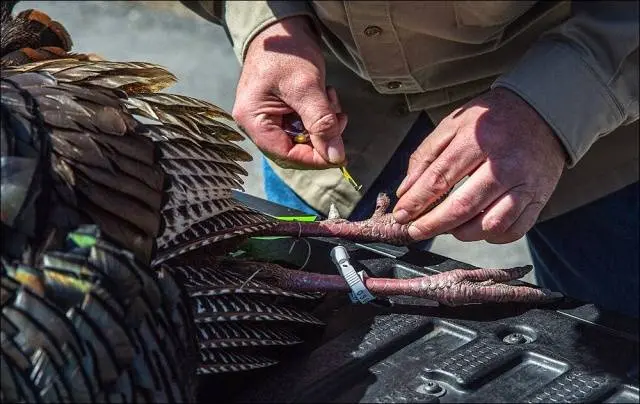
By “corals”
Time of determination: from 2 months
Males on the head and neck have “corals” – growths that can increase in size due to the presence of a large number of capillaries in them. “Corals” are secondary sexual characteristics; they are absent in females.
The photo shows the difference between the male and female in the presence of “corals”:
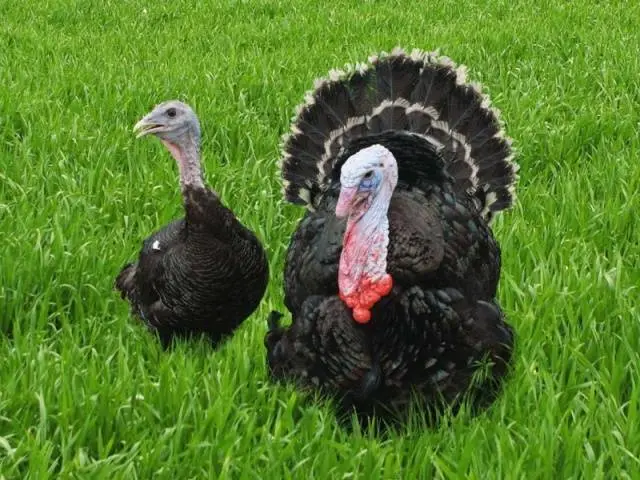
By the tassel on the chest
Definition time: from 13 weeks
Males have a stiff brush of feathers on their chest (between the sternum and goiter). The plumage itself on the chest of turkeys is coarse and thick. In females, the brush is also found, but much less frequently. The plumage on the chest of turkeys is softer and not as thick as that of males.
How does the brush on the chest of a turkey look like in the photo:
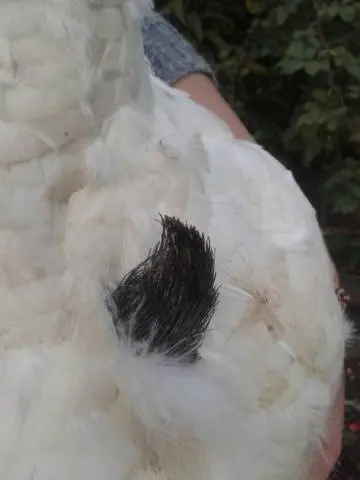
On the “earring” above the beak
Definition time: from 13 weeks
Turkeys of both sexes have outgrowths above the beak. In turkeys, this fleshy process is large, at moments of excitement it can increase in length (up to 15 cm) and width. In turkeys above the beak – a barely noticeable germ.
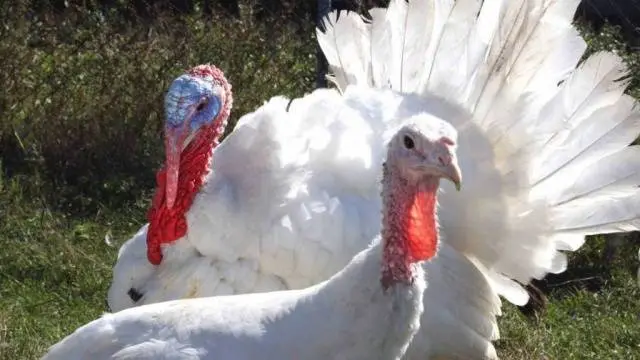
By the gland on the neck
Definition time: from 5 months
The method is considered unscientific, but valid. The gland is present only in turkeys, it is determined by probing (it resembles a hairy wart to the touch).
Turkey size
Male turkeys look larger and stronger than turkeys. Adult turkeys are much larger and heavier than turkeys.

On the legs
Turkeys have longer legs than females and larger paws.
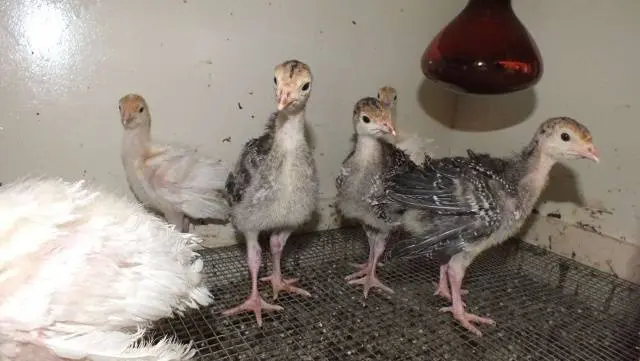
According to the width of the chest
Males have a wider chest than turkeys.
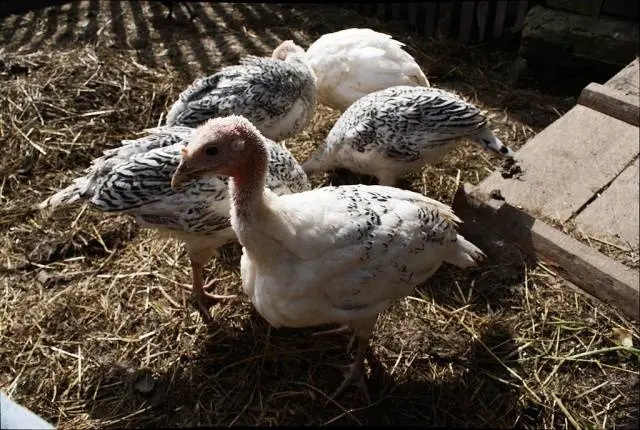
By tail feathers
Turkeys have beautiful tails: with even, dense feathers. In females, the tail is much simpler.

By litter volume
The method is proposed by the farmers of America. According to their observations, the litter of females is more abundant than that of turkeys, it lies in a slide. In males, the litter is denser, laying down in the form of the English letter “J”.
Feathers on the head
Turkeys have a bald, red head, turkeys have fluff. The head of females is smaller than that of turkeys.
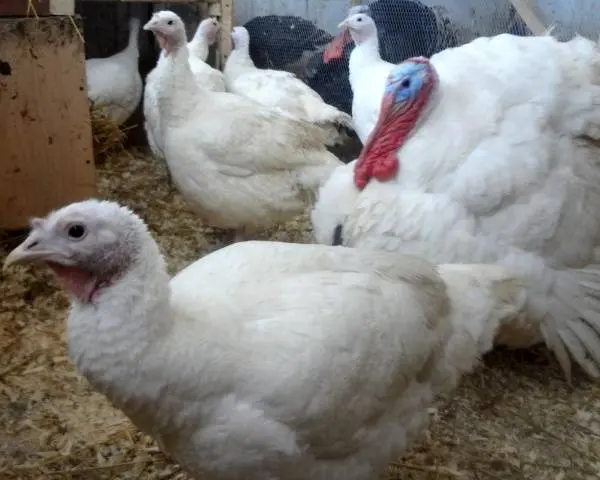
By the feathers on the neck
The naked part of the neck of males is longer than that of females.
In the photo: black – male, light – female. It can be seen that the neck of a turkey is more naked than that of a turkey.

By voice
Males, unlike females, “bubbling”. There is also a popular way to identify a male by giving a voice: whistle loudly, if he answers, then it’s a male.
Conclusion
Knowing the main features inherent in a particular sex of turkeys, it is quite easy to identify the sex of even a newborn chick.










